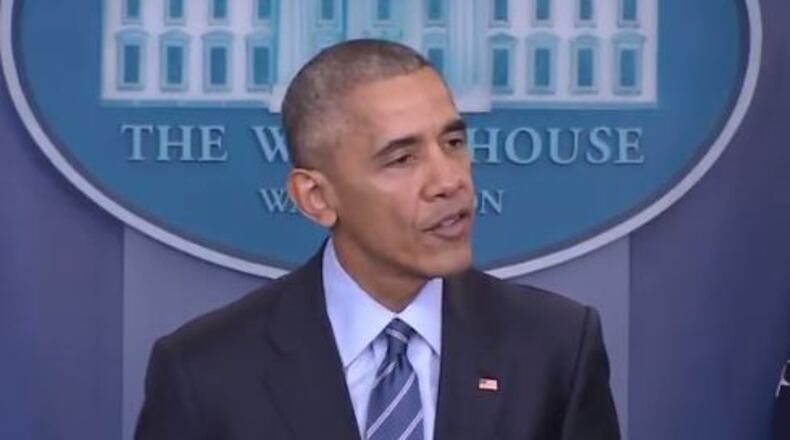1. The headline number on unemployment is better for Obama. If you just check the jobless rate, that has improved under President Obama's time in office. When he took the oath of office in January of 2009, the unemployment rate was going up, as the economy was shedding thousands upon thousands of jobs; eight years ago, the December 2008 unemployment numbers was at 7.3%. The jobless rate peaked at 10 percent in October of 2009, and ended at 4.7 percent in December 2016.
2. Over six straight years of jobs growth. Many may not believe it, but that's what the numbers show. In December 2016, 156,000 jobs were added in the U.S. The last time that the jobs number went the wrong way was in September of 2010, though there have been some close calls, like May of 2016, when only 24,000 jobs were created. It's not hard to see how different things were in 2009, with huge job losses in the first months of the Obama Administration.
3. Another unemployment indicator that looks better. One of my favorite statistics is what's known as the U6 rate - it is the broadest measure of unemployment, accounting for those who are unemployed, those who are working part-time because they can't find a full-time job, plus workers who had been out of work for over a year, but hadn't searched for a job in the last month, and more. The U6 was down to 9.2 percent in December 2016, after peaking as high as 17.1 percent in 2010.
4. The labor force keeps getting smaller. While the jobless rate and the monthly jobs numbers have been good for the Obama Administration, it's not hard to find other numbers that have not looked as good - like the Labor Force Participation rate, which shows what level of the workforce actually has a job in the United States. That rate stayed at 62.7 percent in December, as it has slowly trended down from a high point of 65.8 percent in the Obama Administration, from February of 2009. Critics are right to say that this figure has gone the wrong way.
5. Record number of Americans not looking for work. The overall numbers about the labor force not only don't look good as a percentage of the population, but also don't look good in total - over 95 million people who could work, but are not working for a variety of reasons. That number of Americans not working stood just over 80 million when President Obama took over at the White House, so that's about a 16 percent increase.
6. It still takes a long time to find a new job. In December of 2016, the average time of unemployment stood at 26 weeks - that is exactly half a year. The Labor Department data shows that is higher than it was when President Obama took office - the average time unemployed was at 19.8 weeks in January of 2009. But, you can't ignore that December figure is much lower than the peak, when the average time out of work was almost at 41 weeks in July of 2011.
Obviously, you can highlight data that will shine a more positive or negative light on this administration in just about any way you want - but these six examples show there remain both good and troubling economic indicators from the two terms of President Obama.
About the Author






